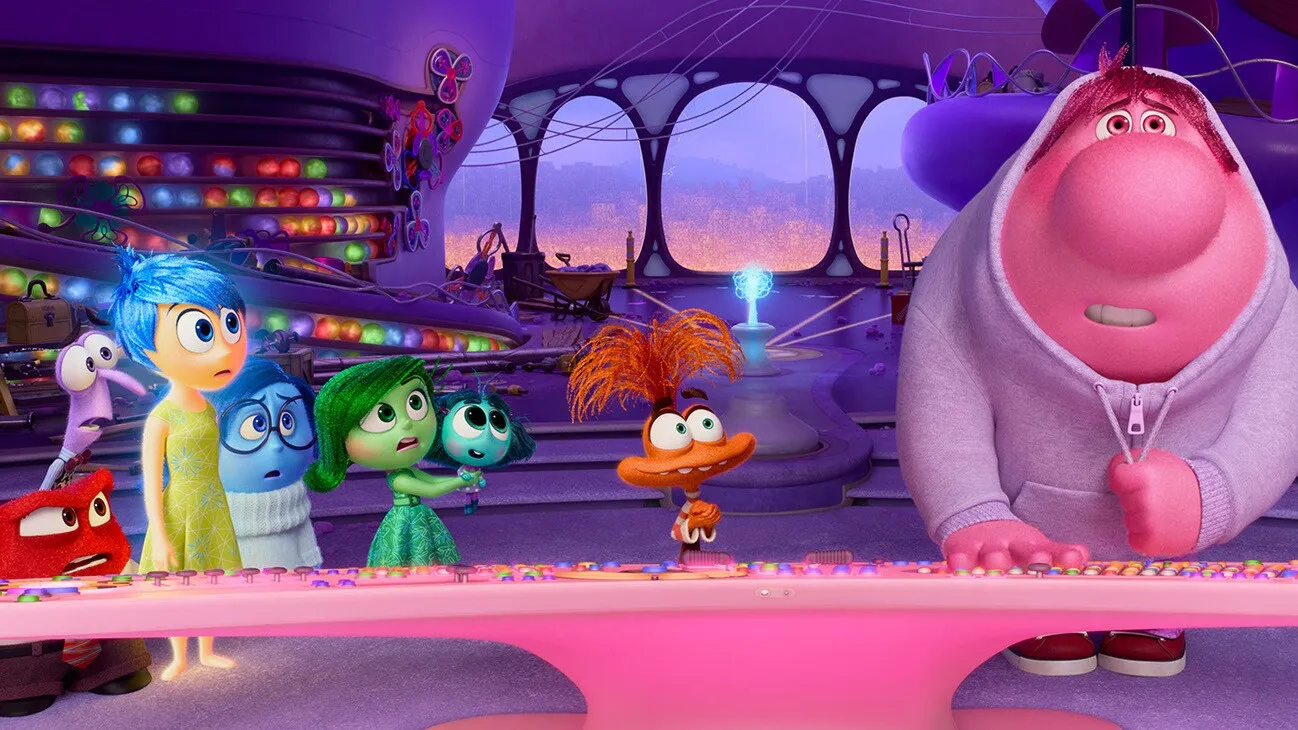
Film Review: Inside Out 2
Film Reviews
Inside Out 2
Director: Kelsey Mann
Pixar Animation Studios
In Theaters: 06.14
Whenever a classic gets a sequel, the stakes are high and even Pixar has delivered a couple of disappointing follow-ups. There was reason to be hopeful for Inside Out 2, however, thanks to a premise packed with potential.
Riley (Kensington Tallman, Summer Camp) is now 13 years old and entering her last summer before high school. As is the case with any teenager, Riley is overwhelmed with emotions. Those emotions—Joy (Amy Poehler, Parks & Recreation, Mean Girls), Sadness (Phyllis Smith, The Office), Anger (Lewis Black, Man of the Year ), Fear (Tony Hale, Arrested Development) and Disgust (Liza Lapira, Crazy Stupid Love)—are finding that the control console is becoming quite sensitive to the touch and provoking extreme reactions. On the night before Riley leaves for hockey camp, the console’s puberty alarm goes off, and it’s time for an upgrade. The new console is soon overshadowed by the arrival of Anxiety (Maya Hawke, Stranger Things, Wildcat) and a whole new group of emotions: Envy (Ayo Edebiri, Bottoms), Ennui (Adèle Exarchopoulos, Blue is The Warmest Colour) and Embarrassment (Paul Walter Hauser, Cruella, I, Tonya). As Riley finds herself in a teenage world, Anxiety takes over, banishing the basic Emotions. Joy must find a way to regain control of Riley before her core personality is changed forever.
Inside Out 2 is more than just a good sequel; it’s Pixar’s best film in years. The story of Riley’s inner journey (pun intended) into teendom is rich, insightful and riotously funny. The story bears a vague resemblance to the 1995 Tony Scott submarine thriller Crimson Tide, as Joy and Anxiety lead separate factions in their fight for control of their vessel, with each firmly believing that they are in the right. The bulk of the film is focused more on suspense and conflict this time around, and while it doesn’t trigger the tear ducts in quite the same way as the original, it would be wrong to call it less emotional. As Anxiety finally loses control, Inside Out 2 features arguably the most heart-pounding and riveting portrayal of an overwhelming anxiety attack ever put on film, pulling the audience right inside the action. It’s an amazing sequence that ranks among Pixar’s most inspired moments, and even if nothing else about the film worked, this alone is enough to make it great. Thankfully, nearly everything works out, and the sequences of Riley at camp feature some of the most disarmingly realistic animation that I had to do a double take more than once to process the fact that I wasn’t watching a live-action film.
A perfectly-cast Poehler is once again a true joy in the role of Joy, and it remains the best role she’s had on the big screen. The entire cast is superb, with Hale and Lupira capably stepping in for original cast members Bill Hader and Mindy Kaling, who opted not to return, and the transition is nearly seamless. Tallman is quite touching as this much more complicated version of Riley, and might count as the standout among standouts if it weren’t for the glorious gift to acting that is Maya Hawke. Anxiety is alternately hilarious, infuriating and heartbreaking, as Hawke makes every moment a symphony of overthinking and over-feeling. It’s the kind of performance that begs for a new “Best Performance By A Voice Actor” category to be added to the Oscars, and it cements her status as one of Hollywood’s most exciting new stars.
Inside Out 2 is likely to be the summer’s most satisfying blockbuster by a wide margin, and it’s just what a recently flailing Disney needed to remind everyone that when they are at the top of their game—no other studio even comes close. I couldn’t be more overcome by joy—and by Joy—to give Inside Out 2 a resounding recommendation for all audiences. –Patrick Gibbs
Read More Animated Animation Reviews:
Series Review: Smiling Friends (Season 2)
Belle: The Futuristic Retelling That Saved the Theater Experience
